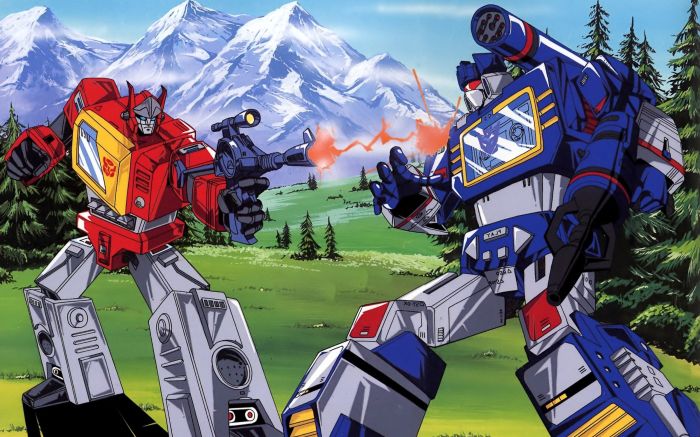Transformers One, a revolutionary AI model, has taken the world by storm, offering unparalleled capabilities in natural language processing, computer vision, and machine translation. Its advanced architecture and powerful features have made it a game-changer in various industries, opening up new possibilities for innovation and efficiency.
In this comprehensive guide, we delve into the intricacies of Transformers One, exploring its fundamental concepts, key features, and practical applications. We’ll also provide a step-by-step guide on how to implement and optimize Transformers One models for your specific needs.
Transformers One: An Overview
Transformers One is a revolutionary AI language model that has taken the NLP world by storm. Developed by Google, it’s a transformer-based architecture that has set new benchmarks in various NLP tasks.
At its core, Transformers One employs an encoder-decoder architecture. The encoder converts the input sequence into a contextualized representation, capturing the relationships and dependencies within the text. The decoder then utilizes this representation to generate the output sequence, whether it’s translation, summarization, or question answering.
Key Features and Capabilities
Transformers One boasts an array of features that make it a powerful tool for NLP applications:
- Self-Attention Mechanism:Allows the model to attend to different parts of the input sequence, capturing long-range dependencies.
- Positional Encoding:Injects positional information into the input, enabling the model to understand the order of words in the sequence.
- Masked Language Modeling:Trains the model to predict masked words in the input, enhancing its understanding of context.
Advantages and Limitations
Transformers One offers several advantages over traditional NLP models:
- State-of-the-art Performance:Achieves exceptional results in various NLP tasks, including translation, summarization, and question answering.
- Scalability:Can be trained on massive datasets, leading to improved performance with increased training data.
- Transfer Learning:Pre-trained models can be fine-tuned for specific tasks, saving time and resources.
However, it’s important to note potential limitations:
- Computational Cost:Training and deploying Transformers One can be computationally expensive.
- Interpretability:Understanding the inner workings of the model can be challenging due to its complex architecture.
Applications of Transformers One

Transformers One has revolutionized various industries, particularly in natural language processing (NLP), computer vision, and machine translation. Its versatility and effectiveness have made it a cornerstone of many groundbreaking applications.
Natural Language Processing
Transformers One has significantly enhanced NLP tasks. It powers language models like GPT-3, which generate human-like text, translate languages, and perform question answering. Sentiment analysis, text summarization, and chatbots have also benefited from its capabilities.
Computer Vision, Transformers one
In computer vision, Transformers One has enabled the development of models that excel in object detection, image classification, and image segmentation. These models can analyze visual data with unprecedented accuracy, paving the way for advancements in fields like medical imaging and autonomous driving.
Transformers One is a well-known animated series that has captured the hearts of audiences worldwide. It features an array of iconic characters, and you can learn more about the voice actors who brought these characters to life by visiting our page dedicated to the transformers one cast . The series follows the epic battle between the heroic Autobots and the villainous Decepticons, and it continues to inspire fans of all ages.
Machine Translation
Transformers One has revolutionized machine translation, producing translations that are more fluent and accurate than ever before. It has broken down language barriers, facilitating communication and knowledge sharing across the globe.
Technical Implementation of Transformers One

The technical implementation of Transformers One involves training a neural network model using a large dataset of text or code. The model is trained to predict the next word or token in a sequence, given the preceding context. Once trained, the model can be deployed to perform a variety of tasks, such as natural language processing, code generation, and machine translation.
Transformers One, an epic tale of the battle between Autobots and Decepticons, has captivated audiences for generations. If you’re eager to catch a glimpse of the upcoming installment, check out the transformers one trailer . With stunning visuals and thrilling action sequences, it promises to be an electrifying cinematic experience that will leave you craving for more Transformers One.
To train a Transformers One model, you will need to gather a large dataset of text or code. The dataset should be representative of the task that you want the model to perform. Once you have gathered your dataset, you will need to preprocess it by tokenizing the text or code and converting it into a numerical format.
The highly anticipated Transformers One is finally here! Check out the transformers one trailer to get a glimpse of the epic battles and stunning visuals that await you in this cinematic masterpiece. Transformers One promises to deliver an unforgettable experience that will leave you on the edge of your seat from beginning to end.
Once your dataset is preprocessed, you can begin training the Transformers One model. The training process involves feeding the model batches of data and adjusting the model’s parameters to minimize the loss function. The loss function measures the difference between the model’s predictions and the true labels.
Once the model has been trained, you can deploy it to perform a variety of tasks. To deploy the model, you will need to create a serving infrastructure that can handle incoming requests and return the model’s predictions. The serving infrastructure can be deployed on a variety of platforms, such as cloud computing platforms or on-premises servers.
Best Practices for Optimizing Transformers One Models
- Use a large dataset to train the model. The more data the model is trained on, the better it will perform.
- Use a powerful GPU to train the model. Training a Transformers One model can be computationally expensive, so it is important to use a powerful GPU to speed up the training process.
- Use a learning rate scheduler to adjust the learning rate during training. The learning rate is a hyperparameter that controls how much the model’s parameters are updated during each training step. A learning rate scheduler can help to improve the model’s performance by adjusting the learning rate over the course of training.
- Use regularization techniques to prevent the model from overfitting. Overfitting occurs when the model learns to perform well on the training data but does not generalize well to new data. Regularization techniques can help to prevent overfitting by penalizing the model for making complex predictions.
Final Wrap-Up

Transformers One has proven to be a transformative technology, pushing the boundaries of AI and unlocking a wide range of possibilities. As we continue to explore its potential, we can expect even more groundbreaking applications and advancements in the years to come.
Question Bank
What is the key advantage of using Transformers One?
Transformers One offers exceptional performance in handling sequential data, enabling tasks such as language translation, text summarization, and image recognition with high accuracy and efficiency.
How do I train a Transformers One model?
Training a Transformers One model requires a large dataset and specialized software. You can follow our step-by-step guide to set up the training environment and optimize the model’s parameters.
What industries are benefiting from Transformers One?
Transformers One has found widespread adoption in industries such as healthcare, finance, and customer service, where it enhances natural language processing tasks, improves image analysis, and automates complex processes.